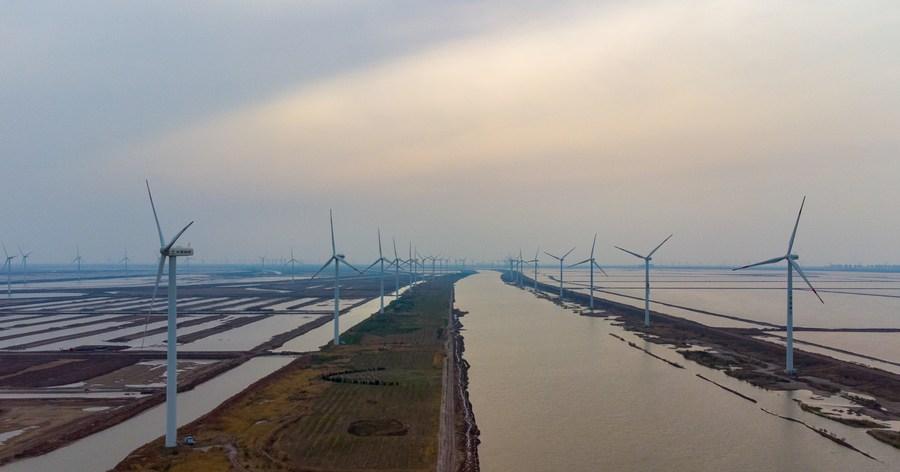
Aerial photo taken on April 12, 2022 shows a wind farm in Binhai New Area, north China's Tianjin. (Xinhua/Sun Fanyue)
TIANJIN, July 22 (Xinhua) -- What PetroChina Dagang Oilfield Company in north China's Tianjin Municipality produces may be fossil fuel, but at least its oil is extracted from underground with green solar energy.
At one of its facilities, a cluster of more than 20 oil wells run round the clock, all powered by electricity generated by over 150 photovoltaic (PV) panels nearby.
The oilfield has built PV power facilities with an installed capacity of 14 megawatts, generating 8.7 million kWh of electricity in the first half of 2022, according to Zhao Pingqi, an official of the company.
A total of 48-megawatt PV power facilities in the oilfield will be operational by the end of this year. They will have an annual electricity output of about 65 million kWh, reducing over 50,000 tonnes of carbon dioxide emissions otherwise produced by thermal power generation, said Li Jianliang, vice manager of the new energy department of the company.
Starting production in 1964, Dagang Oilfield is the third oilfield independently developed and operated by China after 1949. Last year, the oilfield had an oil and gas output of around 4.5 million tonnes of oil equivalent.
As part of its ambitious plan to reduce carbon emissions, the company plans to increase its installed capacity of wind and solar power to 650 megawatts by the end of 2025, not only satisfying its own needs, but also selling the surplus.
According to Dai Houliang, chairman of PetroChina, new energy will account for 7 percent and 50 percent of the company's total energy production capacity by 2025 and 2050, respectively.
China has vowed to tackle climate change and unswervingly follow the path of green and low-carbon development. It has pledged to peak carbon dioxide emissions before 2030 and achieve carbon neutrality before 2060.




 A single purchase
A single purchase









